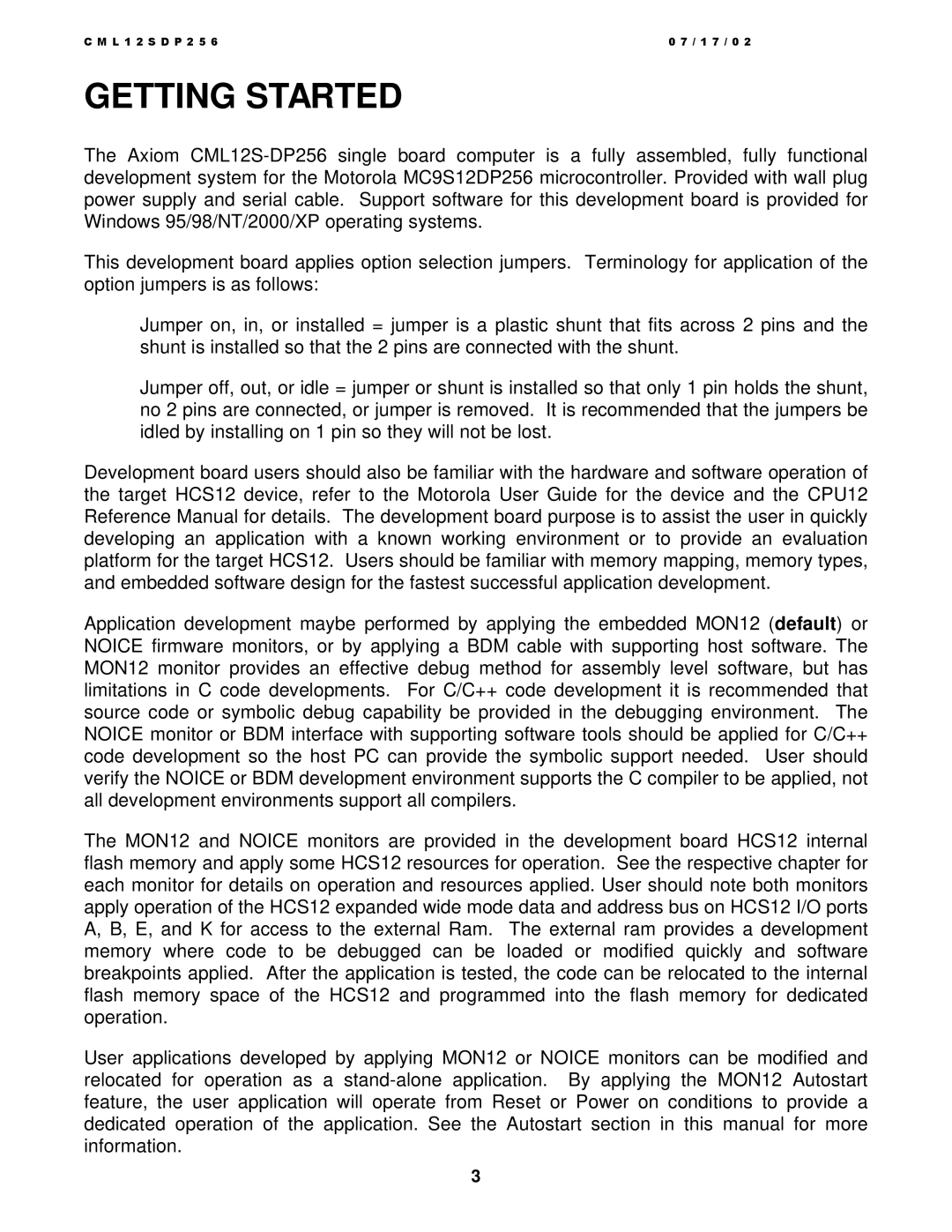C M L 1 2 S D P 2 5 6 | 0 7 / 1 7 / 0 2 |
GETTING STARTED
The Axiom
This development board applies option selection jumpers. Terminology for application of the option jumpers is as follows:
Jumper on, in, or installed = jumper is a plastic shunt that fits across 2 pins and the shunt is installed so that the 2 pins are connected with the shunt.
Jumper off, out, or idle = jumper or shunt is installed so that only 1 pin holds the shunt, no 2 pins are connected, or jumper is removed. It is recommended that the jumpers be idled by installing on 1 pin so they will not be lost.
Development board users should also be familiar with the hardware and software operation of the target HCS12 device, refer to the Motorola User Guide for the device and the CPU12 Reference Manual for details. The development board purpose is to assist the user in quickly developing an application with a known working environment or to provide an evaluation platform for the target HCS12. Users should be familiar with memory mapping, memory types, and embedded software design for the fastest successful application development.
Application development maybe performed by applying the embedded MON12 (default) or NOICE firmware monitors, or by applying a BDM cable with supporting host software. The MON12 monitor provides an effective debug method for assembly level software, but has limitations in C code developments. For C/C++ code development it is recommended that source code or symbolic debug capability be provided in the debugging environment. The NOICE monitor or BDM interface with supporting software tools should be applied for C/C++ code development so the host PC can provide the symbolic support needed. User should verify the NOICE or BDM development environment supports the C compiler to be applied, not all development environments support all compilers.
The MON12 and NOICE monitors are provided in the development board HCS12 internal flash memory and apply some HCS12 resources for operation. See the respective chapter for each monitor for details on operation and resources applied. User should note both monitors apply operation of the HCS12 expanded wide mode data and address bus on HCS12 I/O ports A, B, E, and K for access to the external Ram. The external ram provides a development memory where code to be debugged can be loaded or modified quickly and software breakpoints applied. After the application is tested, the code can be relocated to the internal flash memory space of the HCS12 and programmed into the flash memory for dedicated operation.
User applications developed by applying MON12 or NOICE monitors can be modified and relocated for operation as a
3
